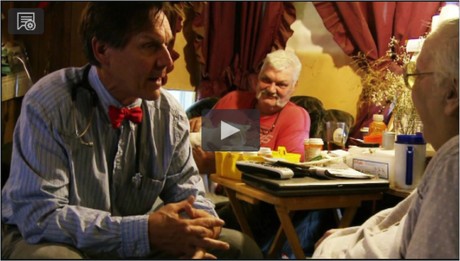A Quiet (Customer) Revolution in US Healthcare
As many of you know, I'm involved in the customer-led design of a new integrated primary care system in my rural community in Maine. That's why I was so impressed by the documentary film, entitled the Quiet Revolution, that aired last month on our local Public Broadcasting System (PBS) channel. The film documents the emerging healthcare practices in four communities--from Belfast, Maine to Ruleville, Mississippi, to San Francisco, CA, to Alaskan First People. What's different? These are communities in which patients and practitioners are working collaboratively to improve patients' health by doing all the right things--from in home visits, to smart uses of technology, to a team approach involving social workers, psychologists, behavioral health, holistic healers, as well as primary care practitioners and local health coaches.

Scene from the Quiet Revolution. Click here to find and play the video.
From a customer experience standpoint, the film focuses on a core message: people (patients) will do what they want to do. So it's the job of the healthcare and preventive care team to engage patients in their own recovery, wellness, and in behaviors that improve the quality of their lives. This is much easier said than done, particularly when the patients are in social and cultural contexts that keep them isolated and stuck in their old routines.
What works? Good old fashioned caring, personal attention, deep listening, and being respectful. Knowing that, in the end, they will make the choices they make. But, here are the things that work:
- Smart, caring people truly understand patients' home, family, and social context;
- Practitioners listen deeply, and patients feel heard;
- Each patient/family has an integrated care team with multiple disciplines--which always includes behavioral health;
- Someone from the care team checks in with them often (sometimes daily);
- They learn to monitor their own conditions and notice cause and effect of diet and exercise;
- Getting patients involved in support groups with their peers in their own community.
Is this more expensive than "regular" primary care? Not if you look at the outcomes: reduced ER visits, reduced hospitalizations, and much better health for the entire community.
0 comments
Be the first one to comment.


